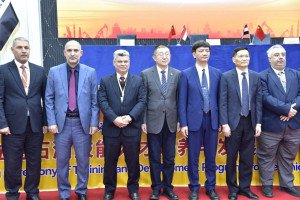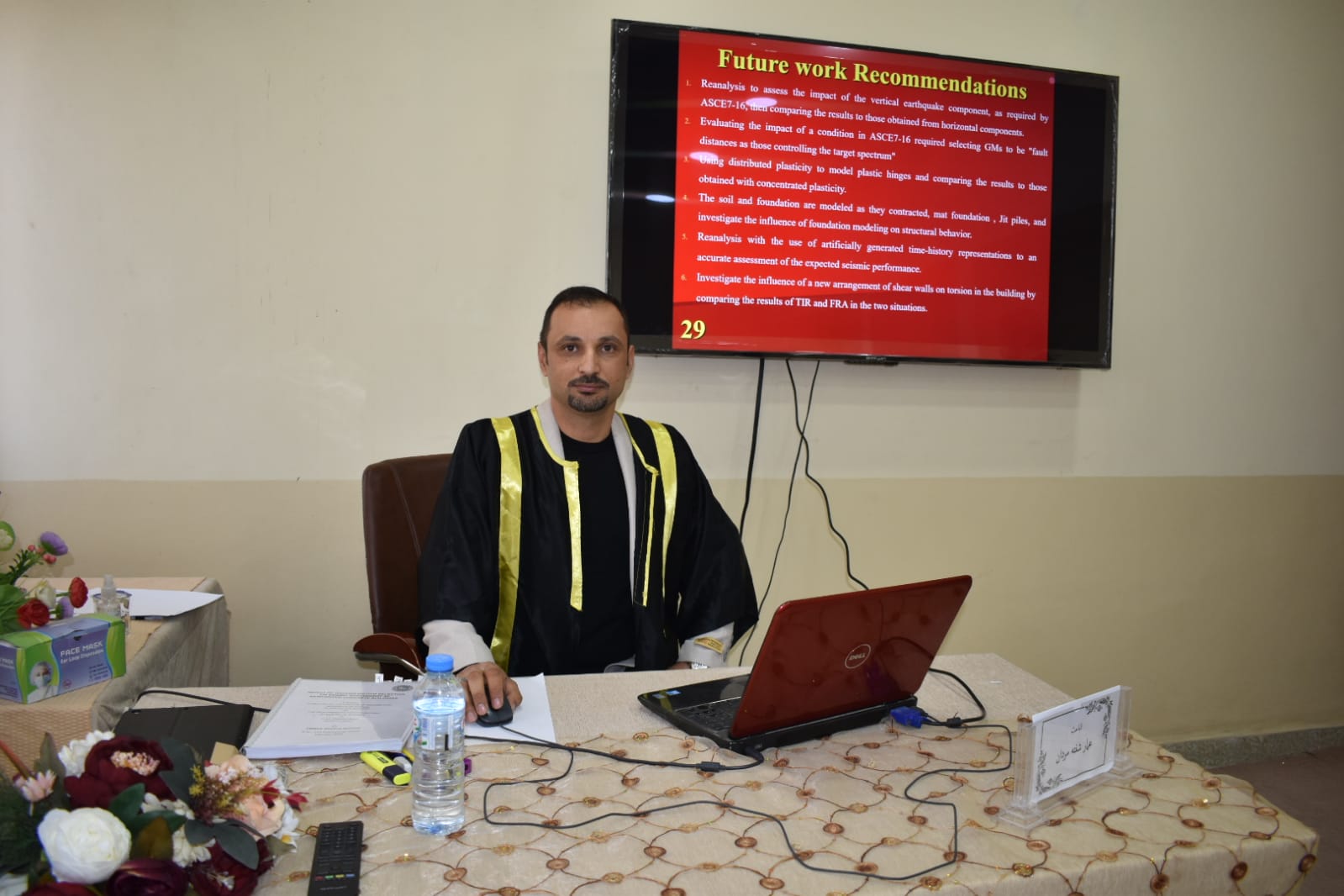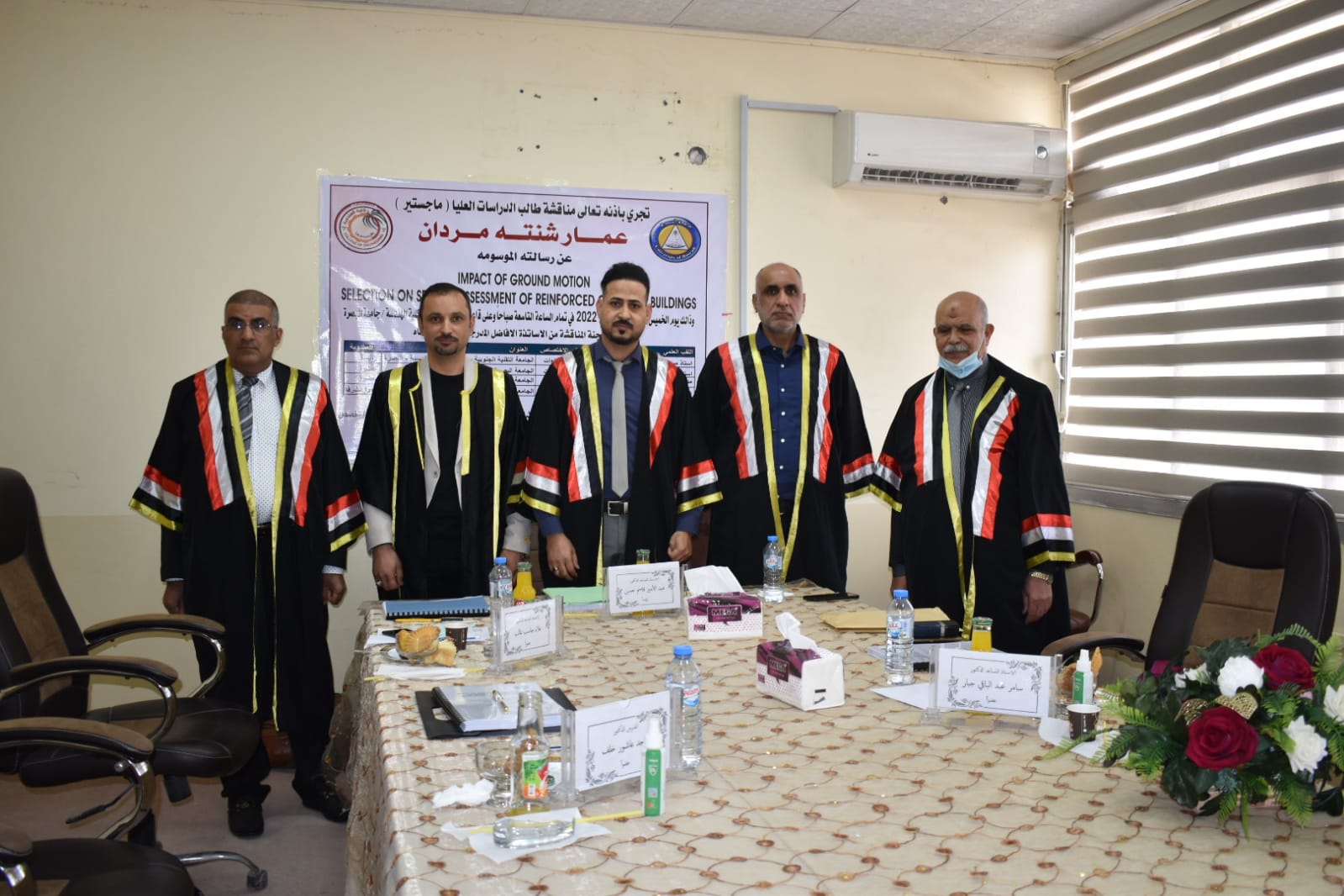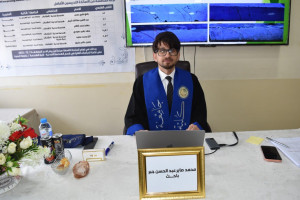
A master’s thesis at the College of Engineering at the University of Basrah discussed (the effect of choosing ground motion recordings on the seismic evaluation of buildings constructed of reinforced concrete)
The thesis presented by Ammar Shanta Mardan
use multiple recordings.
The seismicity was carried out in the X and Y directions. The recordings used were calibrated to match the response spectrum curve
For the city of Basrah, which is designed according to the current Iraqi seismic code (ISC 2017) lateral displacements and torsion
In the building and the plastic joints formed are indicators that have been studied to evaluate the seismic performance of the building through three different cases.
The first and second study cases were selected seismic recordings according to the parameters of the American Standard (ASCE7_10), and the third case was according to the latest American Standard (ASCE7_16).
The thesis aims to determine the effect of selecting ground motion records on assessing the seismic performance of constructed buildings
When comparing the results of the analysis for the three study cases, the thesis concluded a clear difference in performance conclusions
As the buildings built according to the older specifications, their seismic performance must be re-evaluated, especially for low and medium-rise buildings.








